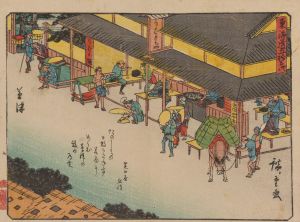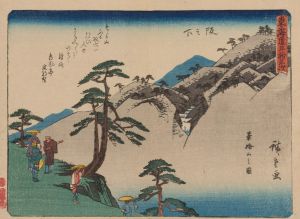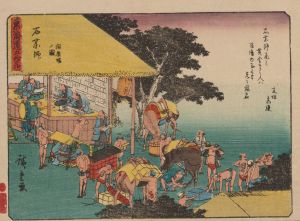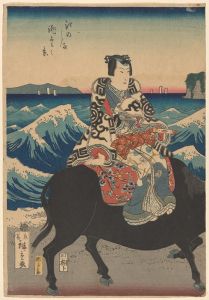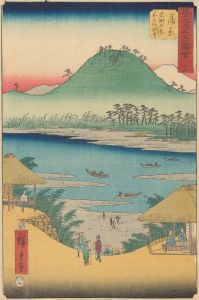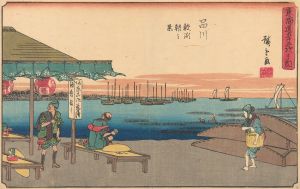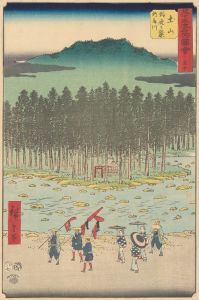
Tokaido gojusantsugi, Pl.33
A hand-painted replica of Andō Hiroshige’s masterpiece Tokaido gojusantsugi, Pl.33, meticulously crafted by professional artists to capture the true essence of the original. Each piece is created with museum-quality canvas and rare mineral pigments, carefully painted by experienced artists with delicate brushstrokes and rich, layered colors to perfectly recreate the texture of the original artwork. Unlike machine-printed reproductions, this hand-painted version brings the painting to life, infused with the artist’s emotions and skill in every stroke. Whether for personal collection or home decoration, it instantly elevates the artistic atmosphere of any space.
Andō Hiroshige, a renowned Japanese ukiyo-e artist of the Edo period, is celebrated for his landscape prints and depictions of the Tōkaidō, a vital coastal route connecting Edo (modern-day Tokyo) to Kyoto. Among his most famous works is the series "The Fifty-three Stations of the Tōkaidō" (Tōkaidō Gojūsan-tsugi), which consists of 55 woodblock prints, including the starting point, Nihonbashi, and the endpoint, Kyoto, along with the 53 stations in between. These prints capture the scenic beauty and cultural significance of each station along the Tōkaidō road.
Plate 33 of this series is one of these iconic prints, though the specific station it represents is not detailed here. Hiroshige's work is characterized by its vibrant colors, attention to detail, and ability to convey the atmosphere of the landscapes and daily life during the Edo period. His prints often include travelers, merchants, and locals, providing a glimpse into the social and economic activities of the time.
Hiroshige's Tōkaidō series was first published in 1833-1834 and quickly gained popularity for its innovative compositions and the way it captured the essence of travel and the natural beauty of Japan. The series was produced using the traditional ukiyo-e woodblock printing technique, which involved carving images into wooden blocks, inking them, and pressing them onto paper. This method allowed for the production of multiple copies, making art more accessible to the public.
The Tōkaidō road itself was an essential part of Japan's infrastructure during the Edo period, facilitating trade, travel, and communication between the political center in Edo and the imperial capital in Kyoto. Hiroshige's prints not only served as artistic expressions but also as visual travel guides for those journeying along this route.
Hiroshige's work, including Plate 33, is noted for its use of perspective and composition, often incorporating elements such as weather conditions, seasonal changes, and the time of day to enhance the viewer's experience. His ability to depict the transient beauty of nature and the human experience of travel has left a lasting impact on both Japanese art and the broader art world.
The influence of Hiroshige's Tōkaidō series extended beyond Japan, inspiring Western artists such as Vincent van Gogh and Claude Monet, who admired the prints for their bold compositions and use of color. Hiroshige's work played a significant role in the Japonisme movement in Europe during the late 19th century, which saw Western artists incorporating elements of Japanese art into their own work.
Today, Hiroshige's Tōkaidō series, including Plate 33, is celebrated for its artistic merit and historical significance. The prints are held in numerous museum collections worldwide, where they continue to be studied and appreciated for their beauty and insight into Edo-period Japan. Hiroshige's legacy as a master of ukiyo-e and his contribution to the art of landscape printing remain influential, underscoring the enduring appeal of his work.





